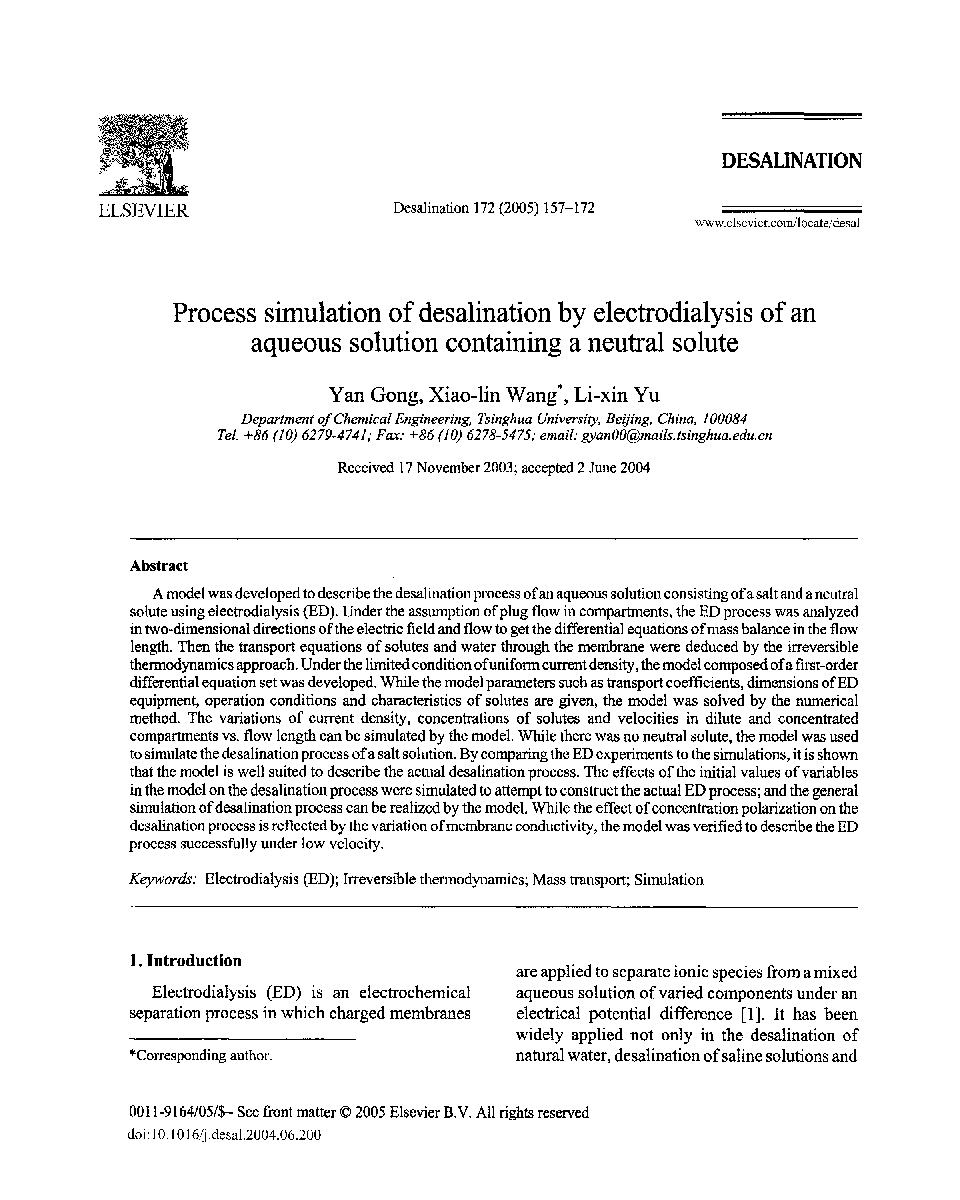| Article ID | Journal | Published Year | Pages | File Type |
|---|---|---|---|---|
| 10386324 | Desalination | 2005 | 16 Pages |
Abstract
A model was developed to describe the desalination process of an aqueous solution consisting of a salt and a neutral solute using electrodialysis (ED). Under the assumption of plug flow in compartments, the ED process was analyzed in two-dimensional directions of the electric field and flow to get the differential equations of mass balance in the flow length. Then the transport equations of solutes and water through the membrane were deduced by the irreversible thermodynamics approach. Under the limited condition of uniform current density, the model composed of a first-order differential equation set was developed. While the model parameters such as transport coefficients, dimensions of ED equipment, operation conditions and characteristics of solutes are given, the model was solved by the numerical method. The variations of current density, concentrations of solutes and velocities in dilute and concentrated compartments vs. flow length can be simulated by the model. While there was no neutral solute, the model was used to simulate the desalination process of a salt solution. By comparing the ED experiments to the simulations, it is shown that the model is well suited to describe the actual desalination process. The effects of the initial values of variables in the model on the desalination process were simulated to attempt to construct the actual ED process; and the general simulation of desalination process can be realized by the model. While the effect of concentration polarization on the desalination process is reflected by the variation of membrane conductivity, the model was verified to describe the ED process successfully under low velocity.
Related Topics
Physical Sciences and Engineering
Chemical Engineering
Filtration and Separation
Authors
Yan Gong, Xiao-lin Wang, Li-xin Yu,
